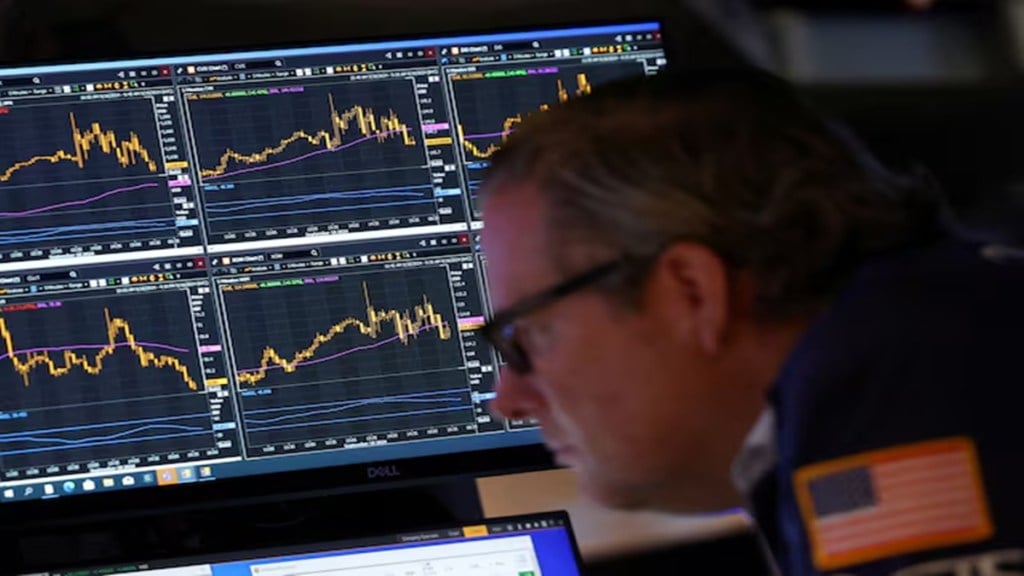The bull market in US stocks is expected to encounter its first serious threat since the last 2-3 years. The US market indices, which reached all-time highs, seem to have lost some of the shine due to trade wars following imposition of Trump’s tariffs.
On Monday, the Dow fell 1.48%, the S&P 500 fell 1.76%, and the Nasdaq Composite fell 2.64%.
If one has to put a finger on one point that led to Monday’s fall, it is – the growth scare. If US economic growth falters, it may have long-term consequences on the markets, which are already at higher valuations.
Here are the top five reasons that could have led to the big fall in Wall Street on Monday.
1.Trump’s Tariffs
The global trade war has begun. Trump’s announcement of proposed tariffs on Canada and Mexico, set to be implemented by midnight, cleared the air around the timing of his tariffs and the markets tanked. The whole uncertainty about the long-term impact of Trump’s tariff plans had its impact on the market.
Major indices initially rose but retreated after President Trump announced 25% tariffs on Canada and Mexico, stating there was no room for negotiations. The President imposed an additional 10% duty on Chinese goods (taking total to 20%) and announced plans to impose tariffs on imported agricultural products starting April 2.
Trump raised tariffs on China imports to 20%, aiming to curb fentanyl entry in the US, citing Beijing’s insufficient efforts to curb illegal drug flow.
Now, even Canada and China have announced tariffs on US imports coming into the country. The Commerce Ministry of China placed 10 American companies on a list of untrustworthy entities and 15 American companies on an export control list. The actions will go into effect on March 10.
2.US Manufacturing data disappoints
Manufacturing data released on Monday came in weaker than expected. The Institute for Supply Management (ISM) reported that its manufacturing PMI fell to 50.3 this month from 50.9 in January.
A reading above 50 indicates expansion. Furthermore, its index of input prices paid by manufacturers increased to 62.4, the highest level since June 2022, and materials were taking longer to arrive, implying that import duties could hurt output. In short, this too is contributing to the increased inflationary pressures.
US inflation data remains worrying as it remained sticky around 3%. New data points suggest a slowing down of the US economy, which is bound to cause worries as cutting interest rates in such an environment may not be an option.
Fed is facing a Catch-22 situation – Trump’s tariffs could result in inflation spiking, restricting Fed to cut rates, but not cutting rates could derail the economy, which is showing signs of slowing down.
3.The Atlanta Fed report showing GDP contraction
The Atlanta Fed’s GDPNow estimates that the US economy will fall by 2.8% in the first quarter. This is nearly double last week’s forecast of a 1.5% decline. The forecast dip represents a significant reversal from two weeks earlier, when the economy was expected to grow 2.3%.
Just four weeks back, the GDPNow model predicted that the US economy would increase by 3.9%.
4.Falling 10-year US Government Bond Yield
The 10-year Treasury note yield fell 4.9 basis points to 4.18%, marking its biggest weekly decline since late November due to concerns about US economic growth. Falling yield is also an indicator of falling economic activity. Expectations about the direction of interest rates are linked to the yield on 10-year Treasurys.
This is yet another reflection of the contradictions faced in the US economy. A lower yield implies near term need for rate cuts on account of a slowing economy. But the fact that inflation is kind of sticky, will the FED actually cut rates?
Also Read: 25 Lakh Indians already Investing Abroad. Their favourite stocks are…
5.Big sell off in Nvidia’s stock
Big tech stocks continue to trade at high valuations, as does the tech-heavy Nasdaq index. Megacap tech stocks like Nvidia, Tesla, Microsoft, Amazon, and Broadcom experienced significant losses, resulting in a loss of 8.7%, 2.8%, 2.1%, 3.4% and 6.1% respectively.
Nvidia’s most recent quarterly financial results generated doubts about what was next for the stock and the AI trade and uncertainty caused by US trade policy has further alarmed investors. Overall, it is the AI stocks that felt the brunt of the market mayhem on Monday.
Some blame the launch of DeepSeek for the dilution in the strong narrative surrounding the entire AI ecosystem. If this does indeed playout, it could be quite painful as this is probably the most levered trade currently.
US Markets on Tuesday
US stock futures stabilized on Tuesday after a tumultuous start to the week, as fears about tariffs weighed on the economic outlook. However, volatility is expected to increase during the day, and it is yet unclear how the US markets will open.
Gold Price
The gold price fell on Tuesday as investors anticipated that the Fed will maintain interest rates high for longer. Trump’s trade tariffs, potential inflation, and the Fed’s stance of higher for longer interest rate scenario threaten non-yielding gold. Also, strength in USD is impacting the bullion market. Gold price today in India is Rs 84,820, for ten grams.
